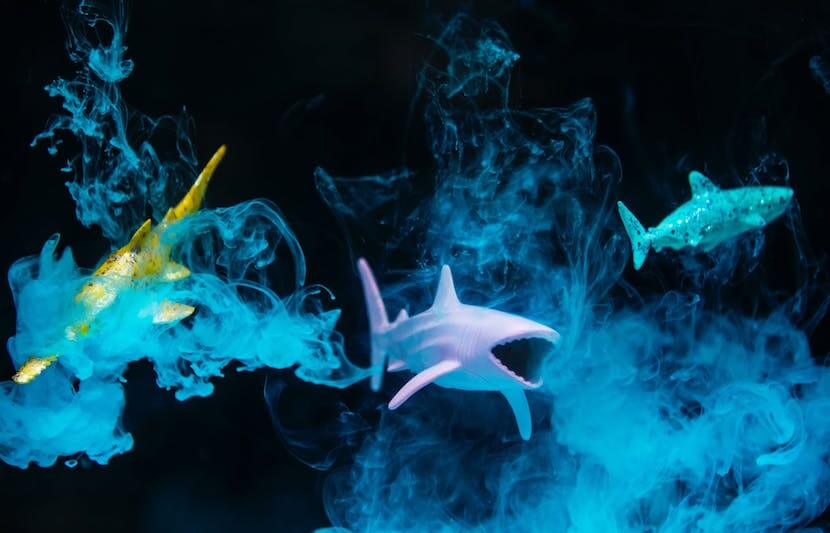While the words “shark” and “attack” don’t usually bode well in the same sentence, new research shows that when it comes to fighting bacteria, they can be a positive pairing.
By imitating the natural properties of shark skin, scientists from UMass Amherst have improved a new type of surface coating infused with antimicrobial agents that can cover objects and attack bacteria.
The research comes at a time when overuse of antibiotics is creating superbugs that threaten global health, food security and development.
In the U.S. alone, at least 2 million people become infected with bacteria that are resistant to antibiotics each year, resulting in at least 23,000 annual deaths, according to the U.S. Centers for Disease Control and Prevention.
The research is published in ACS Applied Materials & Interfaces.
Inspired by sharks
Researchers at UMass Amherst aren’t the first to utilize a shark-skin inspired surface. Institutions like Sharklet Technologies have been using new materials to mimic shark skin and inhibit microbes’ ability to stick to high-touch surface areas.
But, why shark skin?
According to the researchers, the natural diamond-like texture of shark skin possesses unique properties that can prevent the accumulation of organisms.
“Real shark skin has unique characteristics that prevents fouling of barnacles, algae, and other types of bio-foulants on skin,” said Feyza Dundar Arisoy, a doctoral candidate in the Polymer Science and Engineering Department at UMass Amherst and first author of the paper. “When shark skin features are reduced down to bacteria size, the same pattern prevents bacteria fouling on the surface.”
However, previous developments of shark skin-inspired technology have resulted in the build-up of bacteria after long-term use.
Now, the UMass Amherst researchers have developed a method to circumvent that issue and make shark skin-inspired surfaces even more effective.
The UMass Amherst method
To create a longer-lasting coating, the researchers printed their shark skin surfaces with polymer and ceramic composites and infused them with photocatalytic antimicrobial titanium dioxide (TiO2) nanoparticles.
“Unlike other antibacterial agents, titanium dioxide nanoparticles do not bleach out. This advantage makes titanium dioxide an ideal candidate for long-term applications,” said Arisoy.
When TiO2 nanoparticles are exposed to ultraviolet (UV) light, chemical reactions with water and hydroxide molecules form reactions that rupture the outer membranes of bacteria on contact and lead to cell death.
This process allows the shark skin surfaces to fight bacteria more successfully.
For example, in experiments testing the shark skin surfaces against E. coli, the researchers found that without the TiO2 nanoparticles, the shark skin reduced the attachment of bacteria by 70 percent.
However, with TiO2 nanoparticles, they found that shark skin surfaces exposed to UV light for one hour killed over 95 percent of E. coli and 80 percent of staphylococcus aureus.
Applications
So far, the researchers have successfully tested the shark skin-inspired surfaces against E. coli and staphylococcus aureus, and are working to manufacture photocatalytic surfaces for further applications.
Currently, the coating is made through a master mold and is limited to 4 x 4 inch surfaces, but they believe it can be easily sized up for mass production.
The materials also can be adapted for different applications and environments, from soft and pliable polymers to hard and water-resistant ceramics, according to the researchers.
“Our method is a solution-processable, roll-to-roll compatible technique and can easily be manufactured over a large area,” said Arisoy.
With the influx of bacterial resistant infections, shark skin-inspired technology could be an important step in preventing the spread of disease.
So, perhaps in the near future, common objects such as door knobs and bed rails of hospitals could be covered with a shark skin-inspired surface to prevent the mass spread of infection.



